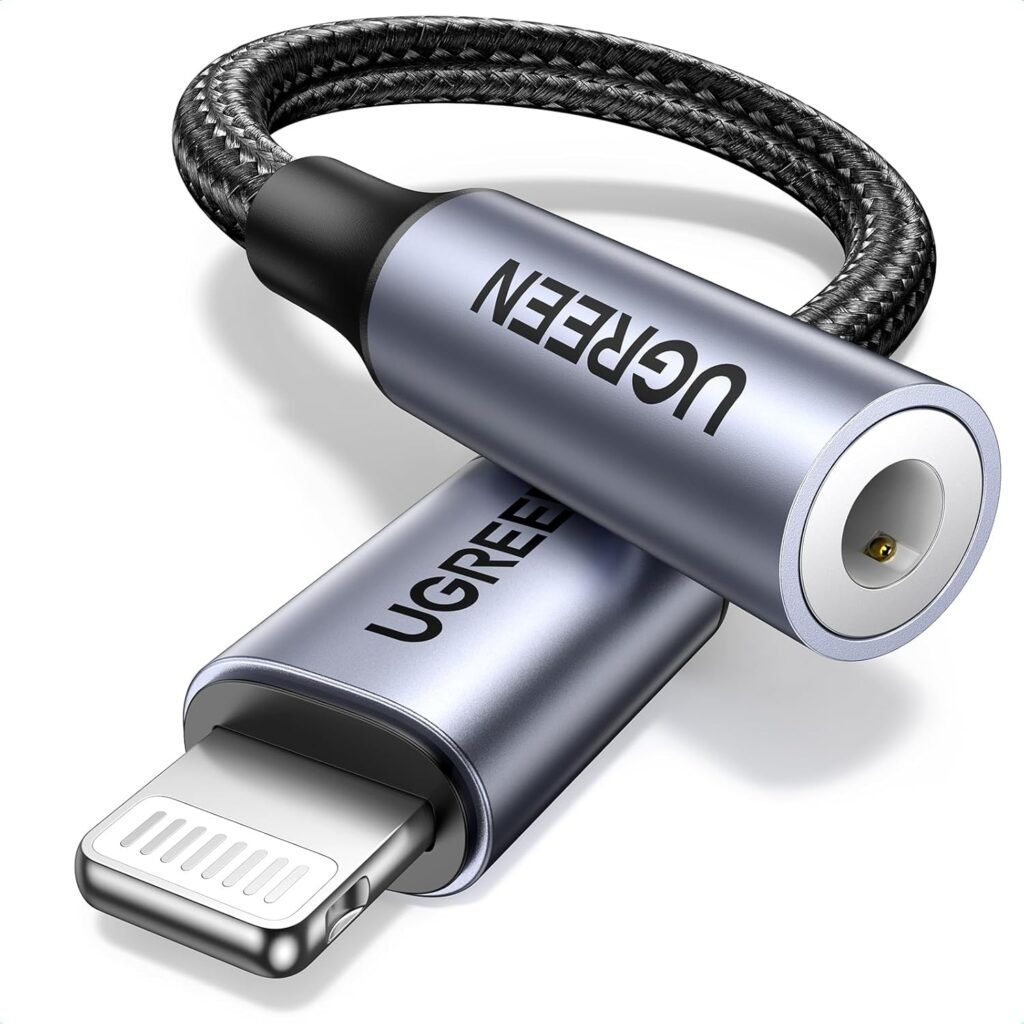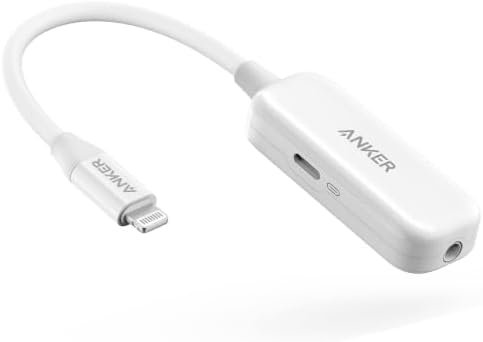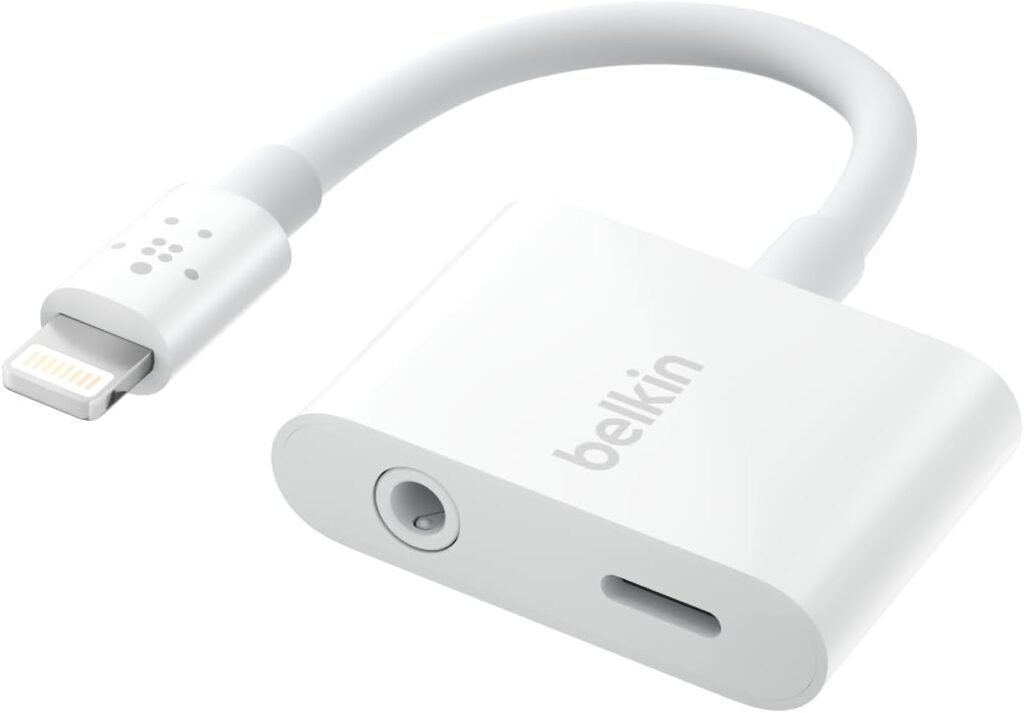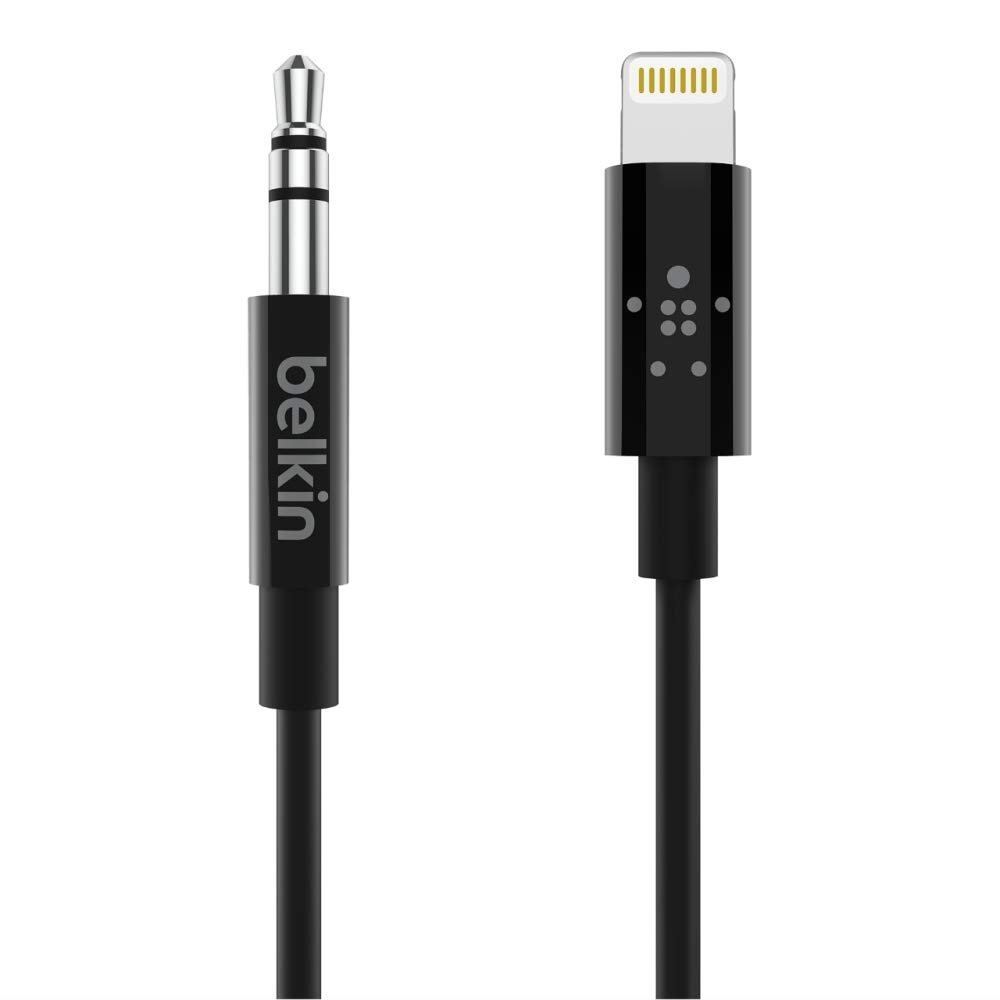Hey there, audio adventurers and gear heads! Welcome back to MindGearMen.com, the place where we dissect the tech that makes your life better. Today, we’re tackling a challenge that has vexed iPhone users since Apple famously found the “courage” to remove the 3.5mm headphone jack.
Remember that moment? The collective gasp from everyone with a favorite pair of high-quality, perfectly broken-in wired headphones. Suddenly, our trusty audio companions felt like relics from a bygone era. Apple pushed us toward a wireless future with AirPods, but let’s be real—that future isn’t for everyone.
Wireless is great, but wired audio has a magic of its own. There’s no battery to charge, no frustrating Bluetooth pairing issues, no audio lag when you’re watching a video, and for the true audiophiles, there’s the undeniable purity of a direct, physical connection. It just works.
So, how do you bridge the gap between your classic cans and your modern iPhone? With a small but heroic piece of tech: the Lightning to 3.5mm headphone jack adapter. This tiny dongle is the unsung hero of the audio world.
But a quick search on Amazon unleashes a flood of options. From Apple’s own creation to beefy, braided cables and multi-functional splitters, it’s a jungle out there. How do you separate the gear from the garbage?
That’s what we’re here for. We’ve plunged into the dongle-filled depths, tested the top contenders, and emerged with the definitive guide. This isn’t just a list; it’s a roadmap to finding the perfect adapter for you. Whether you’re a student on a ramen budget, a daily commuter who’s tough on their gear, or an audio purist who demands the best, we’ve got you covered.
Let’s plug in and find your perfect match.
1. The OG: Apple Lightning to 3.5mm Headphone Jack Adapter
When in doubt, go to the source. Apple’s own adapter is the baseline against which all others are measured. It’s the most common, the most straightforward, and frankly, a surprisingly solid piece of kit for its price.

Diving Deeper: What’s happening inside this tiny white cable? It’s not just wires. It contains a crucial component called a DAC, or a Digital-to-Analog Converter. Your iPhone stores music digitally (as 1s and 0s), but your headphones need an analog electrical signal to create sound waves. The DAC’s job is to make that conversion. The quality of the DAC directly impacts the quality of the sound you hear. For its minuscule size and price, the DAC in Apple’s official adapter is remarkably clean and competent, providing clear, lossless audio that will satisfy the vast majority of listeners.
The Good:
- Flawless Compatibility: As it’s an official Apple product, you will never, ever see that dreaded “This accessory may not be supported” error. It works perfectly, every time, with every iOS update.
- Surprising Audio Fidelity: The integrated DAC is genuinely good. It provides a transparent sound signature that doesn’t color the music, letting your headphones perform as they were intended.
- Unbeatable Price: It’s often under $10. For official Apple hardware, that’s practically a giveaway. It’s cheap enough to buy a spare for your backpack or car.
The Not-So-Good:
- Questionable Durability: This is the adapter’s Achilles’ heel. The thin rubber sheathing at the connection points is notorious for fraying over time, especially if you’re constantly plugging and unplugging it or stuffing it in your pocket. It demands a gentle touch.
Ideal User: The everyday listener, the student, or anyone who wants a reliable, affordable “set it and forget it” solution. If you’re generally careful with your cables and prioritize guaranteed compatibility over ruggedness, this is your best bet.
2. The Reliable Workhorse: UGREEN Lightning to 3.5mm Adapter
UGREEN has carved out a stellar reputation for creating accessories that feel more premium than their price tag suggests. Their Lightning adapter is a perfect example of this philosophy, offering a significant upgrade in durability without a major jump in cost.

Diving Deeper: The key feature here is the MFi Certification. What does “Made for iPhone/iPad” actually mean? It means UGREEN paid a license to Apple and submitted this product for rigorous testing to ensure it meets Apple’s strict standards for safety, durability, and electronic compatibility. A non-MFi adapter might stop working after an iOS update or even pose a risk of damaging your phone’s Lightning port. MFi is your seal of approval that this is a safe, long-term investment. The braided nylon exterior not only looks great but also provides incredible resistance to tangling, fraying, and daily abuse.
The Good:
- Tank-Like Build Quality: The nylon braiding and reinforced aluminum connectors at both ends are designed to withstand bends, twists, and pulls. This adapter feels substantial in your hand.
- MFi Certified Peace of Mind: You get the same guaranteed compatibility as the official Apple adapter, with no risk of errors or performance issues down the line.
- Excellent Value Proposition: For just a few dollars more than the Apple version, you get a massive leap in durability. This is a smart upgrade for anyone tired of replacing frayed cables.
The Not-So-Good:
- Slightly Stiffer Cable: The rugged braiding makes the cable less flexible than Apple’s soft rubber one. It’s a minor trade-off for the added durability but might be noticeable in your pocket.
Ideal User: The daily commuter, the student who tosses their gear in a backpack, or anyone who has a history of destroying Apple cables. This is the perfect blend of affordability and rugged reliability.
3. The Powerhouse: Anker Lightning to 3.5mm Audio Adapter
Anker is the king of reliable third-party accessories, especially when it comes to power and cables. They bring their engineering prowess and obsession with durability to their audio adapter, creating a product that feels virtually indestructible.

Diving Deeper: Anker often reinforces its cables with Aramid fiber, the same material used in body armor. This gives their products an incredible bend lifespan, meaning you can bend the cable back and forth thousands of times without it breaking. While the price is a step up, think of it as paying for longevity. If an Apple adapter lasts you six months and this lasts three years, the long-term value is undeniable. Anker’s confidence is backed by a hassle-free 18-month warranty, which is one of the best in the business.
The Good:
- Legendary Durability: Built with premium materials, this adapter is engineered for a long life. It’s designed to be the last 3.5mm adapter you’ll need to buy.
- Crystal-Clear Audio: Anker uses high-quality components, including a top-notch DAC, to ensure your audio is delivered with zero signal loss or degradation.
- World-Class Warranty & Support: Anker’s 18-month warranty and responsive customer service provide incredible peace of mind. They stand by their products, period.
The Not-So-Good:
- Higher Price Point: You’re paying a premium for the Anker name, the advanced materials, and the extended warranty. It’s an investment in quality.
Ideal User: The “buy it for life” consumer. If you value long-term reliability and are willing to pay a bit more upfront to avoid future hassles, the Anker adapter is your champion. It’s for the serious user who demands performance and durability.
4. The Multitasker: Belkin 2-in-1 Lightning Audio + Charge Rockstar
Here it is: the solution to the ultimate modern iPhone problem. How do you listen to wired headphones on a long flight when your battery is about to die? This is where a 2-in-1 splitter shines, and Belkin’s Rockstar is the gold standard in this category.

Diving Deeper: Creating an adapter that handles both audio and power simultaneously without interference is a real engineering challenge. Cheaper, non-MFi splitters often fail here, introducing an annoying static hiss or buzz when charging. Belkin, working closely with Apple, has perfected this. The Rockstar is MFi certified and designed to intelligently manage power and audio signals separately. It supports pass-through charging up to 12W, so you can power up your iPhone while enjoying pristine, interference-free audio.
The Good:
- Charge and Listen Simultaneously: Its core function is a game-changer for travelers, mobile gamers, or anyone who uses their phone for extended periods.
- MFi Certified Reliability: As one of the premier Apple-affiliated accessory makers, Belkin’s MFi certification ensures it works perfectly and safely.
- Maintains Audio Quality: The high-quality internal components prevent the static and signal degradation that plagues cheaper, knock-off splitters.
The Not-So-Good:
- Bulky Form Factor: Having two ports necessarily makes this adapter larger and more cumbersome than a single-purpose dongle. It’s not something you’d want dangling from your phone all day.
- Significant Price Jump: This is the most expensive adapter on the list, often costing several times more than a standard one. Its value depends entirely on how often you need its dual functionality.
Ideal User: The power user, the frequent flyer, the road-tripper, and the mobile gamer. If you’ve ever been frustrated by having to choose between charging your phone or listening to audio, the Belkin Rockstar is a worthwhile investment that solves a very real problem.
5. The Premium Pick: Belkin Lightning to 3.5mm Headphone Jack Adapter
While the Rockstar solves a power problem, Belkin also offers a simple, single-purpose adapter for those who appreciate superior design and a premium feel. This is the “Apple Store” alternative, offering the same core function as Apple’s own dongle but with a focus on aesthetics and a more robust build.

Diving Deeper: Belkin’s advantage lies in its material science and design synergy. They use high-quality, flexible TPE (Thermoplastic Elastomer) for their cables, which offers better durability and a more premium feel than the standard PVC on Apple’s cables. They focus on the little things, like the tactile feel of the connectors and the clean, minimalist design that looks like it came straight out of Cupertino. It’s an accessory for those who believe the small details matter.
The Good:
- Elegant and Stylish Design: It perfectly complements the Apple aesthetic. It feels like a natural extension of your iPhone and premium headphones.
- Enhanced Durability: The materials used are a clear step up from the standard Apple adapter, offering better resistance to wear and tear.
- MFi Certified and Trusted: Belkin has a long-standing relationship with Apple, and their products are known for their reliability and seamless integration.
The Not-So-Good:
- Premium Price for a Single Function: You are paying more for the brand name, design, and improved materials for an adapter that ultimately performs the same core function as cheaper alternatives.
Ideal User: The design-conscious user. If you’ve invested in a beautiful iPhone and high-end headphones, you want an adapter that matches that level of quality and design. This is for the person who appreciates a premium fit and finish.
Frequently Asked Questions (FAQ)
We get it, diving into the world of dongles can bring up a few questions. To help you make the best choice, we’ve put together answers to the most common queries we see about Lightning to 3.5mm headphone jack adapters.
Q1: Will these adapters work with my specific iPhone model?
A: Absolutely! Any of the MFi-certified adapters listed in this guide will work with any Apple device that has a Lightning port but does not have a 3.5mm headphone jack. This includes:
- iPhone 7 and all later models (iPhone 8, X, XS, XR, 11, 12, 13, 14, and all their variants like Pro, Pro Max, Mini, etc.).
- iPads and iPod Touches that feature a Lightning connector instead of a headphone jack.
Q2: Do I lose sound quality when using a Lightning adapter?
A: This is a fantastic question and a common concern for audio lovers. The short answer is: with a quality adapter, no, you will not notice any loss in sound quality.
The longer answer is that every adapter contains a tiny chip called a DAC (Digital-to-Analog Converter). This chip converts the digital audio file from your iPhone into an analog signal your headphones can use. The quality of this DAC determines the final sound quality. All the MFi-certified adapters we’ve recommended use high-quality DACs that preserve the original audio fidelity. Cheaper, non-certified adapters, however, often use inferior components that can result in flatter sound, static, or a lower maximum volume.
Q3: Can I still use the microphone and control buttons on my headphone cable?
A: Yes! All MFi-certified adapters are designed to support full functionality. This means you can still answer calls with your headphone’s built-in microphone, adjust the volume, play/pause music, and skip tracks using the inline remote controls, just as you would if you were plugging directly into a headphone jack. This is one of the biggest reasons to avoid cheap, uncertified knock-offs, as they often fail to support these remote control functions.
Q4: What are the risks of buying a super cheap, non-MFi certified adapter?
A: While the low price of a non-certified adapter can be tempting, the risks are significant and can cost you more in the long run. Here’s what you might face:
- iOS Update Issues: A common problem is that the adapter works fine until you update your iPhone’s software. Apple can easily block non-certified accessories with an update, rendering your adapter useless overnight.
- Error Messages: You are likely to see the “This accessory may not be supported” error, which will prevent it from working.
- Poor Audio Quality: As mentioned above, they use cheap DACs, which can make your music sound terrible.
- Overheating and Safety: Non-certified adapters don’t undergo Apple’s rigorous safety testing. They can overheat during use, and in rare cases, could even damage your iPhone’s delicate Lightning port, leading to a very expensive repair.
Q5: Why did Apple remove the headphone jack in the first place?
A: According to Apple, there were two main reasons. First, the 3.5mm port is an old piece of analog technology that takes up a surprising amount of internal space. Removing it allowed them to make room for other components like a larger battery, an improved camera system, and the Taptic Engine that provides haptic feedback. Second, Apple wanted to push the industry towards a “wireless future” with products like their AirPods.
Q6: Is there a real difference between a $9 adapter and a $30 one?
A: Yes, the price difference typically comes down to four key areas:
- Build Materials: A more expensive adapter will use stronger materials like braided nylon, reinforced aluminum connectors, and higher-grade flexible plastics, leading to a much longer lifespan.
- Component Quality: Premium adapters may use slightly better internal components, including the DAC, for the purest possible audio signal.
- Functionality: A higher price might get you extra features, like the 2-in-1 Belkin Rockstar that allows for simultaneous charging and audio.
- Warranty and Brand Reputation: You’re also paying for the research, development, MFi licensing fees, and customer support offered by reputable brands like Anker and Belkin.
Q7: Why shouldn’t I just buy a pair of Bluetooth headphones?
A: Bluetooth is a great technology, but it’s a matter of personal preference. Here’s why many people still prefer a wired connection via an adapter:
- Zero Latency: Wired connections have no audio delay, which is crucial for watching videos or playing games where you want the sound to sync perfectly with the action.
- No Charging Required: Your wired headphones are always ready to go. You never have to worry about whether they’re charged.
- Audio Quality: While Bluetooth quality has improved immensely, a direct wired connection can still offer superior, uncompressed audio fidelity, especially when using high-end headphones.
- Cost-Effective: An adapter is a very cheap way to continue using an expensive pair of wired headphones you already own and love.
Final Thoughts: The Choice is Yours
Losing the headphone jack was a pivotal moment in smartphone history, but it doesn’t mean the end of your high-fidelity wired audio experience. It just means you need the right tool for the job. This tiny adapter is more than just a cable; it’s a bridge to your favorite music, podcasts, and memories, delivered with the clarity and reliability you love.
To recap:
- For pure, simple, budget-friendly functionality: Go with the Apple Adapter.
- For a massive durability upgrade on a budget: The UGREEN Adapter is your champion.
- For the ultimate in long-term reliability: Invest in the Anker Adapter.
- For power users who need to charge and listen: The Belkin Rockstar is a must-have.
- For a touch of premium design: The Belkin Adapter offers style and substance.
The perfect piece of gear is waiting for you on Amazon. Don’t let your amazing wired headphones collect another speck of dust. Grab the adapter that fits your lifestyle and rediscover the pure joy of plugging in.
Now we want to hear from you! What’s your biggest frustration with the missing headphone jack, and what’s your go-to solution? Share your story in the comments below!


